Building blocks enhance children’s problem-solving abilities and mathematics skills, as well as help them builds self-esteem and feelings of success. That is probably why these architects have used them as the inspiration for the buildings of schools and nurseries composed of diversely colored rectangular building volumes, aiming to stimulate imagination and surprise, instead of simply following the rules and regulations.

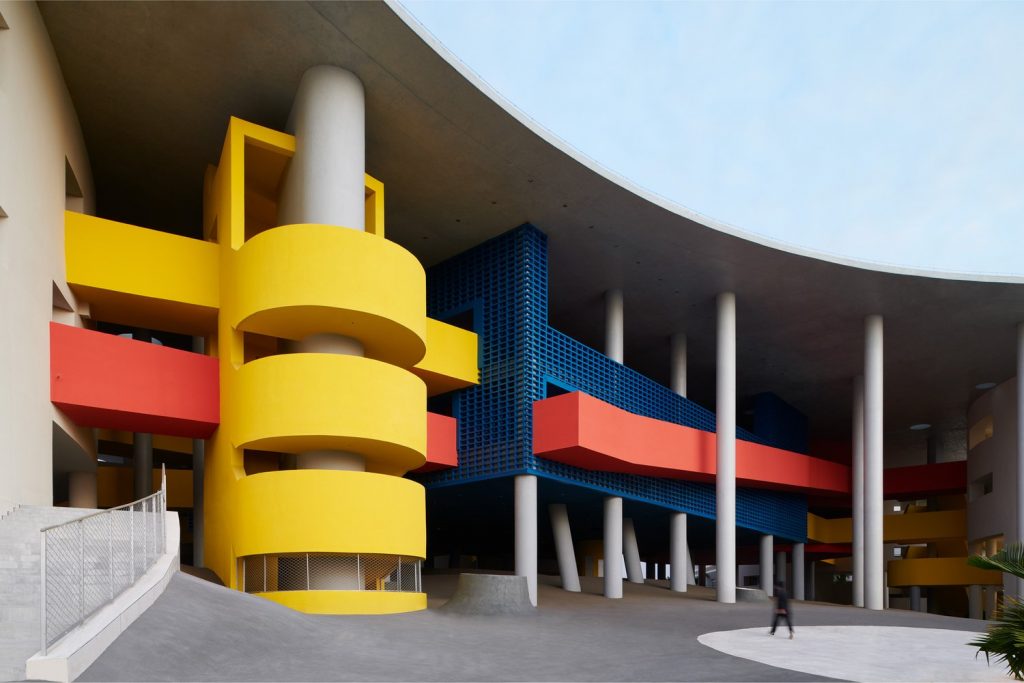
Haikou Jiangdong Huandao Experimental School by Trace Architecture Office
Designed as part of a wider development alongside a kindergarten and student dormitory, the Haikou Jiangdong Huandao Experimental School by Beijing-based studio Trace Architecture Office (TAO) was created to encourage a nurturing environment that celebrates creativity and interaction rather than examination-oriented learning cultures. Brightly coloured volumes and sweeping curves add a sense of creativity to the campus.

Haikou Jiangdong Huandao Experimental School by Trace Architecture Office
The school sits on a playfully sloped site in the coastal city of Haikou in Hainan and comprises a series of curved volumes and rectilinear forms that intersect under a concrete roof that provides shading and protection against wind and rain and facilitates natural ventilation, which actively responses to the local tropical climate. The design regards the campus as a miniature garden city, responding to the surrounding environment, with its green space, river, wetland and ocean. Meanwhile, the curves, vivid colors and poetic spaces echo the unique childlike innocence and playfulness, aiming to evoke children’s imagination and creativity.
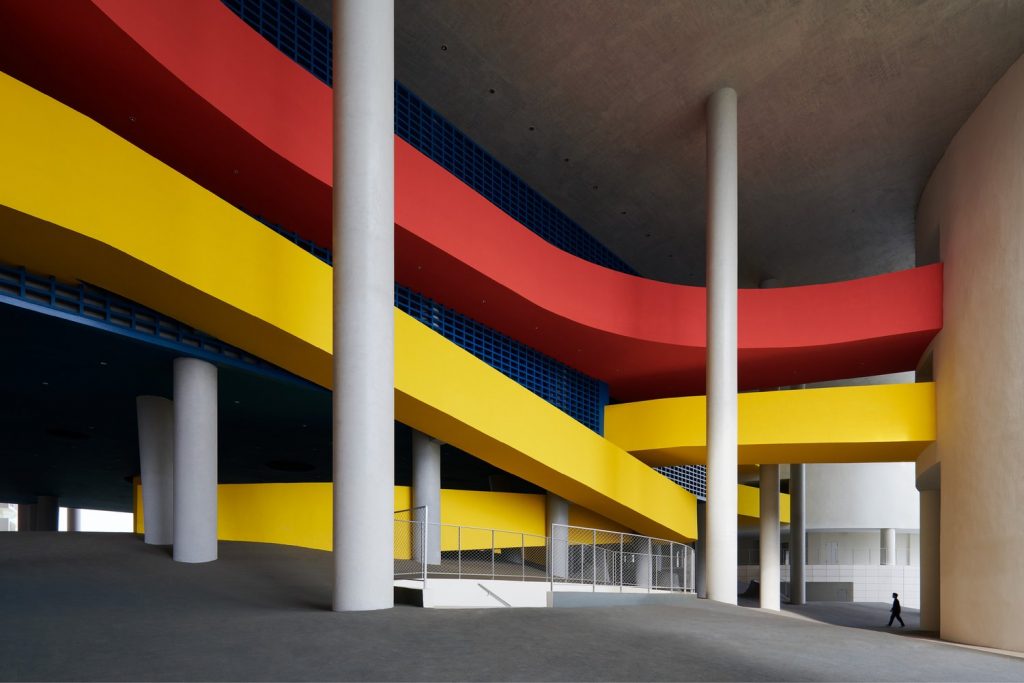

Haikou Jiangdong Huandao Experimental School by Trace Architecture Office
Aiming to create spaces that stimulate creativity, the team omitted the “fishbone” layout of the traditional school design. Instead, they introduced a “radial” plan that allows all programs to be connected by the shortest path, achieving efficient interconnection networks.
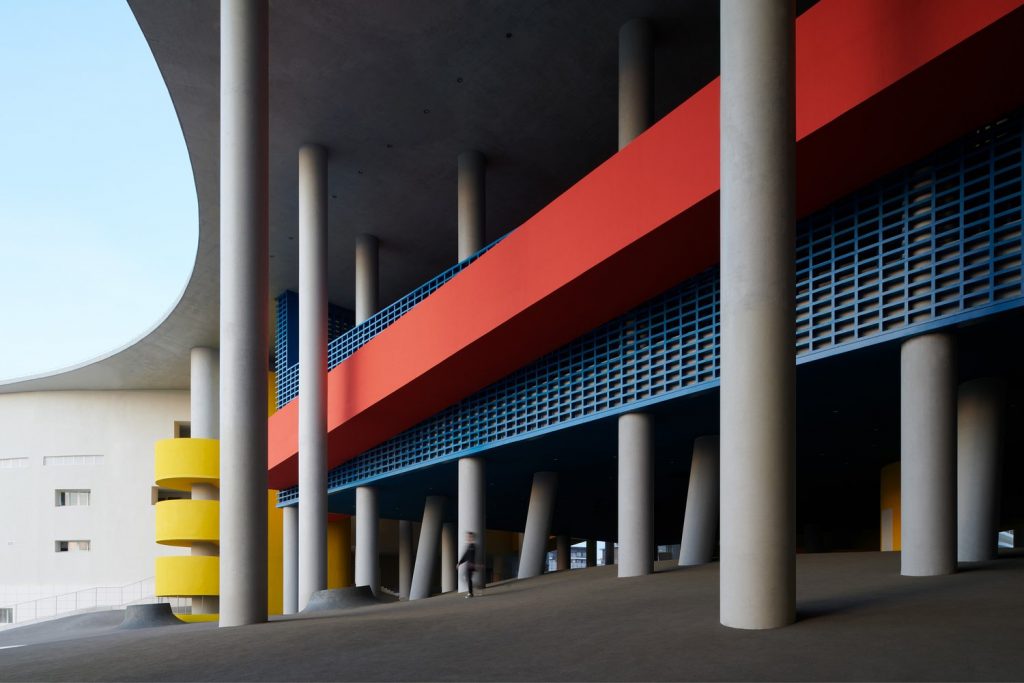
Haikou Jiangdong Huandao Experimental School by Trace Architecture Office
The colour breaks from the white standard, giving the space character. It also has the role of zoning, as in such a huge volume, pure white space is easy to get lost in. The micro-topography landscape design and double-height columns symbolize natural “hills” and “bamboo forest”. Bridges of different height are suspended among the columns, creating diversifies spaces that encourage exploration, discovery and imagination. The interior is illuminated by diffused daylighting through skylights, together with hues of the colors and shadows, creating an overall spiritual and mystical balance.
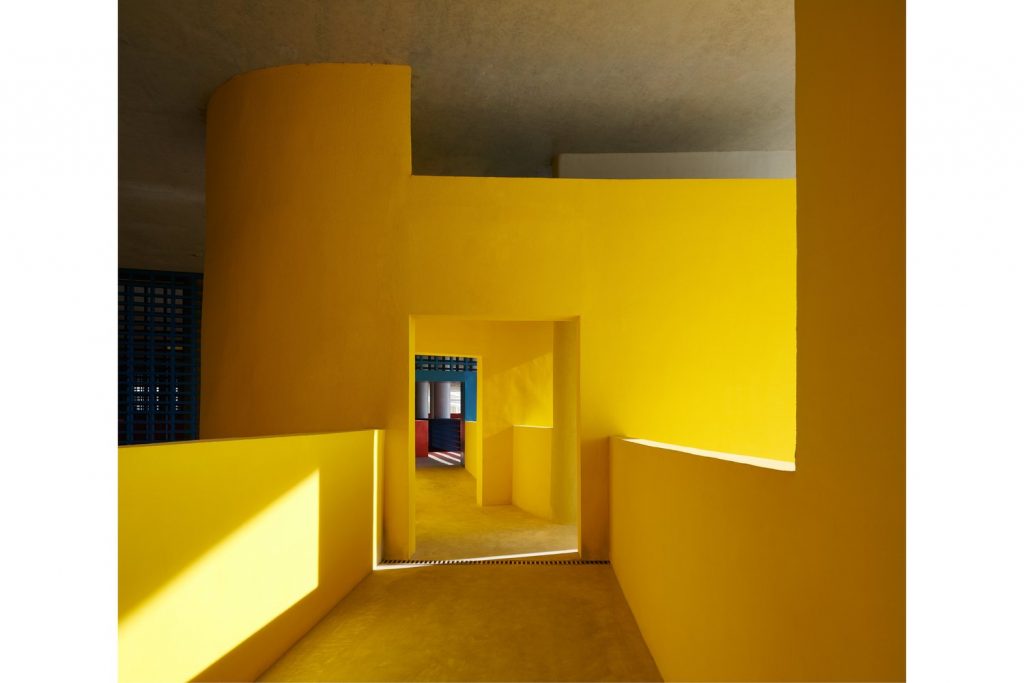
Haikou Jiangdong Huandao Experimental School by Trace Architecture Office
Functionally, as the “heart” of the primary school, the central zone is arranged with multi-purpose event hall, library, lecture hall and other public spaces. Not only it connects different functional spaces such as teaching blocks, gymnasium, canteen and offices on different floors, but also serves as a cohesive area for extracurricular activities and social interaction.
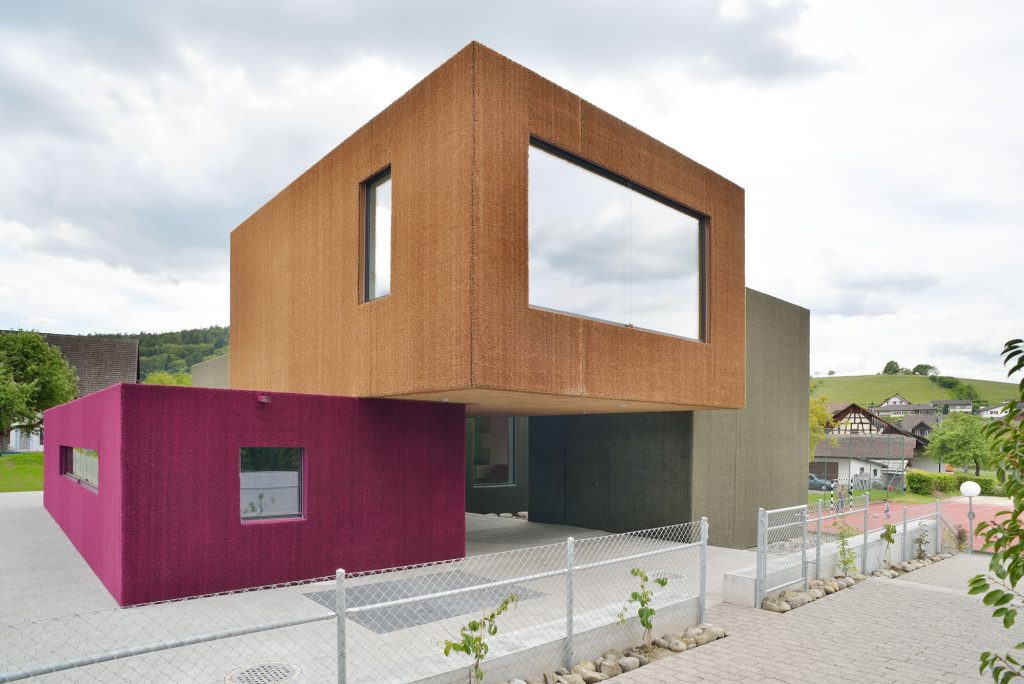
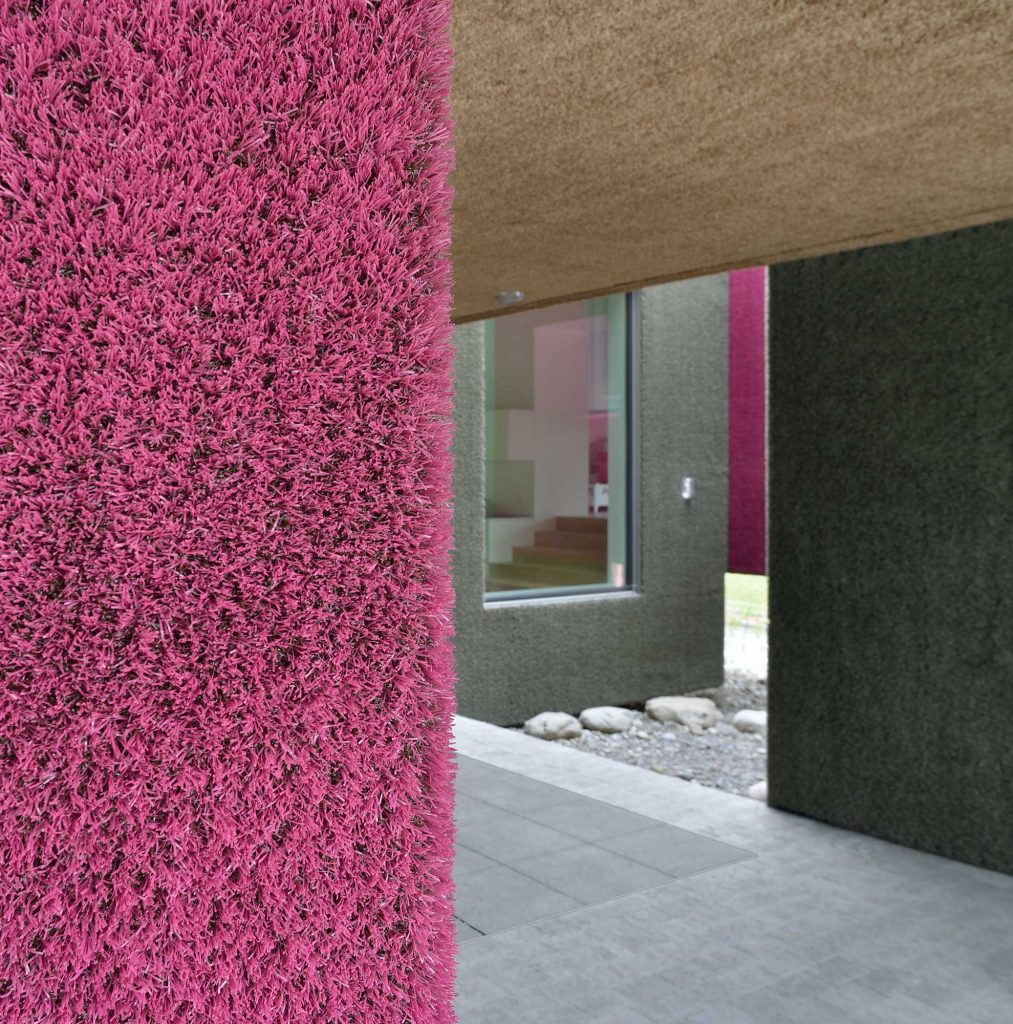
Weiach kindergarten by L3P architekten
Located in a Swiss mountain village, the new Weiach kindergarten by L3P Architekten is an addition to the town’s existing primary school campus and composed of diversely colored rectangular building volumes. The structural blocks that were prefabricated off site are not only characterized by diverse colours but are also wrapped in artificial turf material resulting in a fuzzy surface texture. This finish is intended to produce a playful and child-friendly atmosphere.

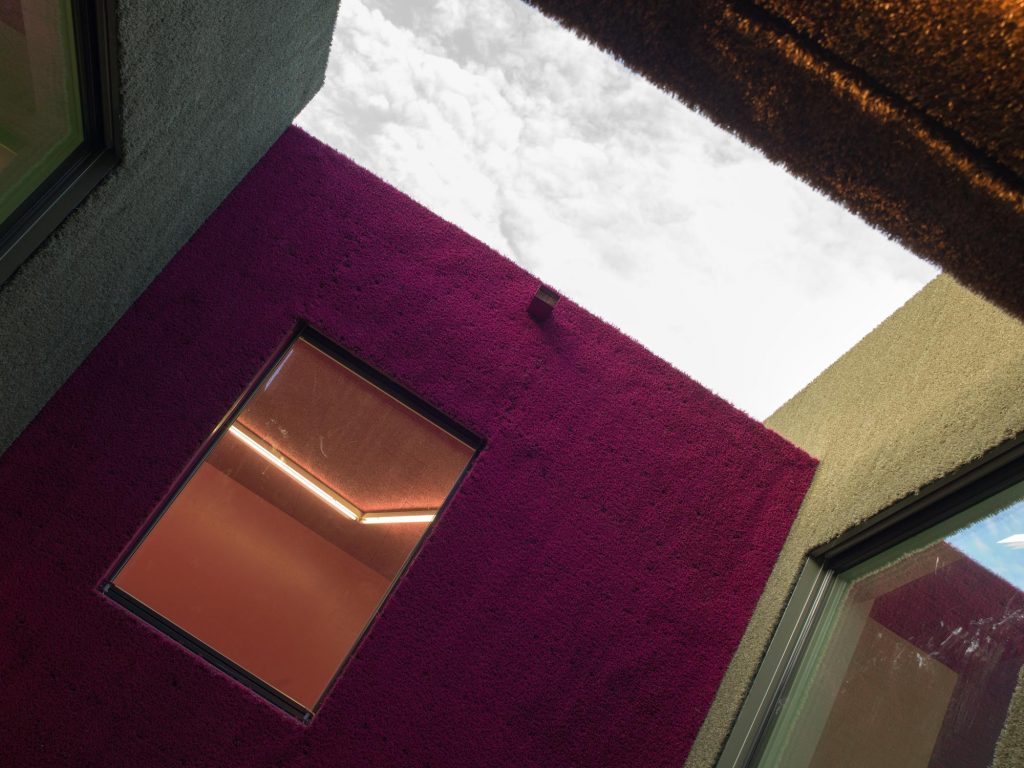
Weiach kindergarten by L3P architekten
Colourful surfaces characterize the overall building and its various spaces. The exterior is composed of three tones, including straw gold, red kraut and olive green, whie the interior features a different palette made of vibrant green, yellow, purple, and pink, as well as wood veneer staircases.

Morinoie nursery school by Masahiko Fujimori Architects
To promote a vibrant and encouraging atmosphere for its students and the surrounding city, Masahiko Fujimori Architects translated a child-like energy into the design of Morinoie nursery school in the Japanese city of Sendai. The colourful nursery school building is designed to efficiently accommodate increased numbers of children, while also encouraging their curiosity and creativity.

Morinoie nursery school by Masahiko Fujimori Architects
To connect the school with the surrounding city, the street-facing facade is dotted with colorful, projecting house-like window frames that areinspired by the elementary, block-house model often drawn by children. This form, universally recognized by the young and old has been reinterpreted to create a more complex design — fulfilling the school’s programs, but also maintain the comfort of the home.
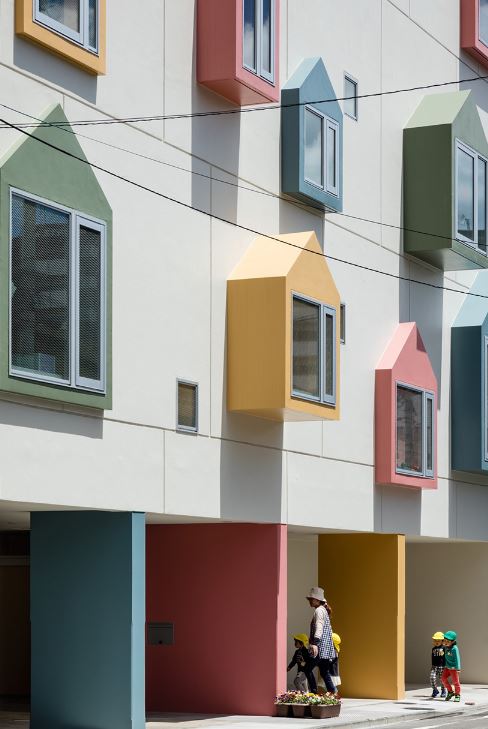
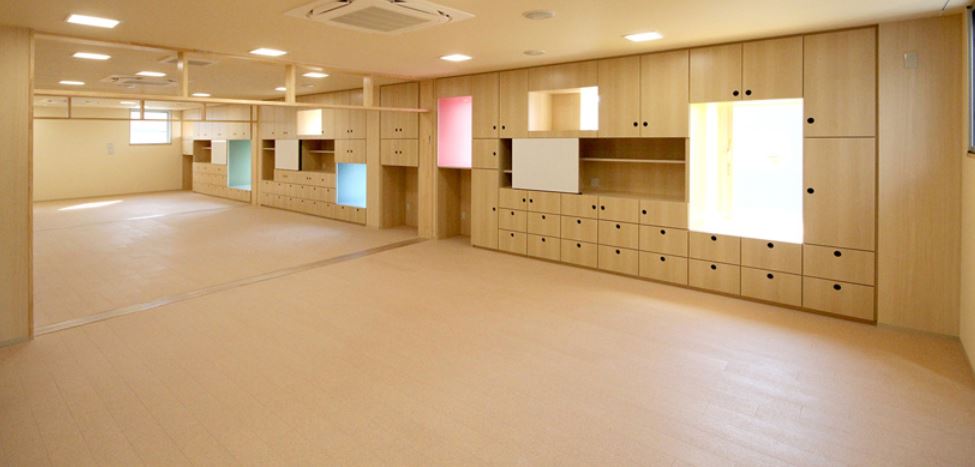
Morinoie nursery school by Masahiko Fujimori Architects
The colourful bay windows communicate the energy and activity inside the building to the surrounding neighborhood, offering the site as a positive symbol for the town and a bond between the children and their local community.
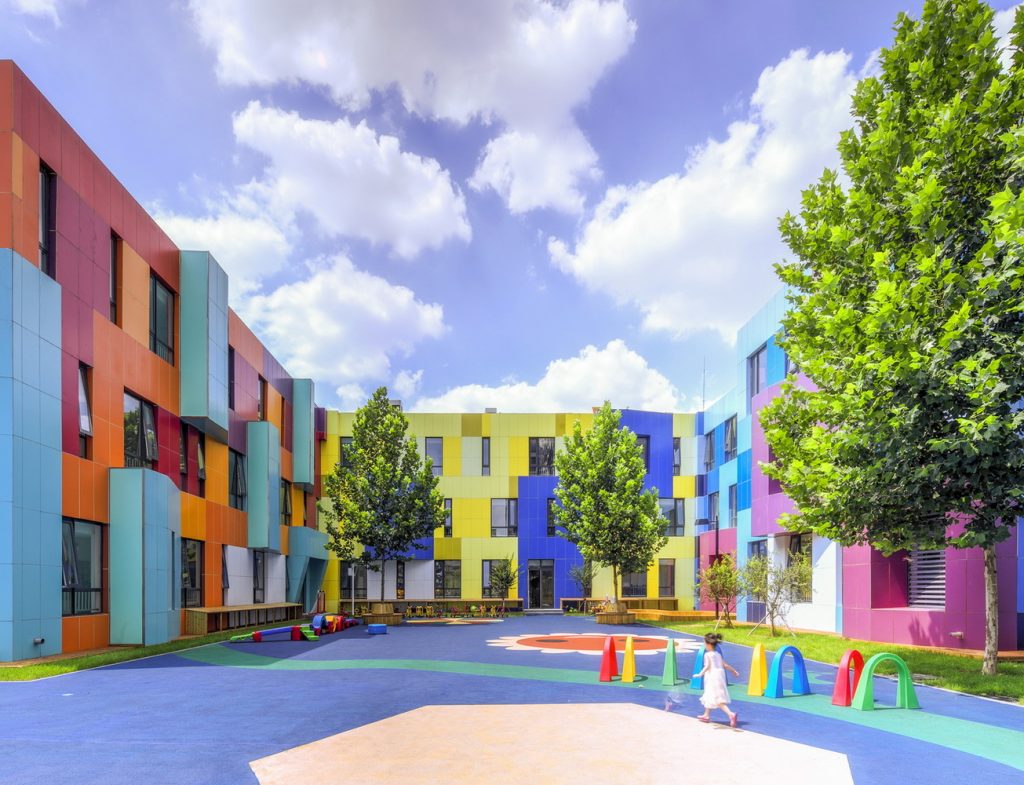
No.12 Middle School by Atelier Alter (also header image)
Chinese practice Atelier Alter has begun the project of No.12 Middle School in Beijing with converting the scale from a grown-up to a child. The team used building blocks as the inspiration and created large colour volumes that pop-up from the facade as gigantic building blocks for the neighborhood. The two sides of the pop-up volumes are lighting panels, which turn the structure a gigantic modern art of light and colour at night The colourful structure stands out from the vernacular housing construction, and creates a dialogue with the children of the neighborhood.
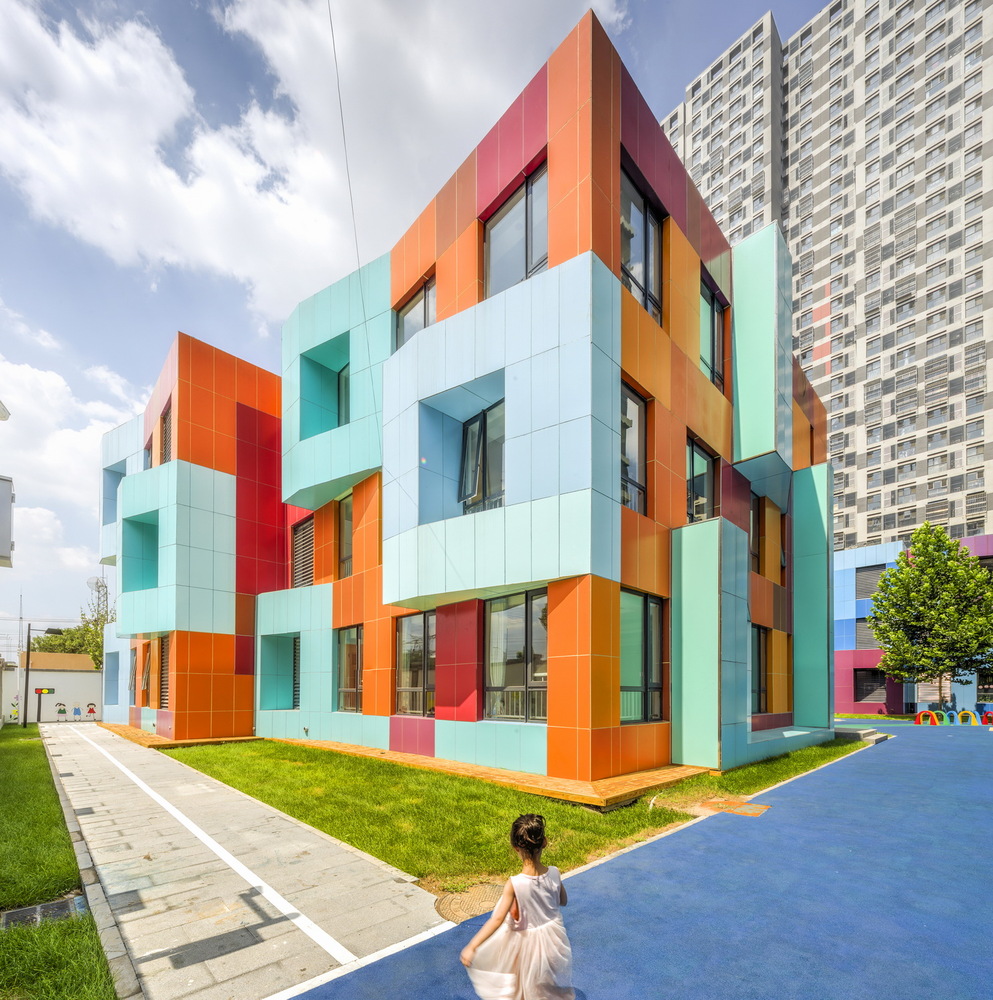
No.12 Middle School by Atelier Alter
The architecture design tries to create a pure and simple paradise with memorable spaces for children. The kindergarten is composed of clean lines and shapes of primary colours. By looking through the lens of a child, the purity and innocence of childhood are well preserved in the architecture.
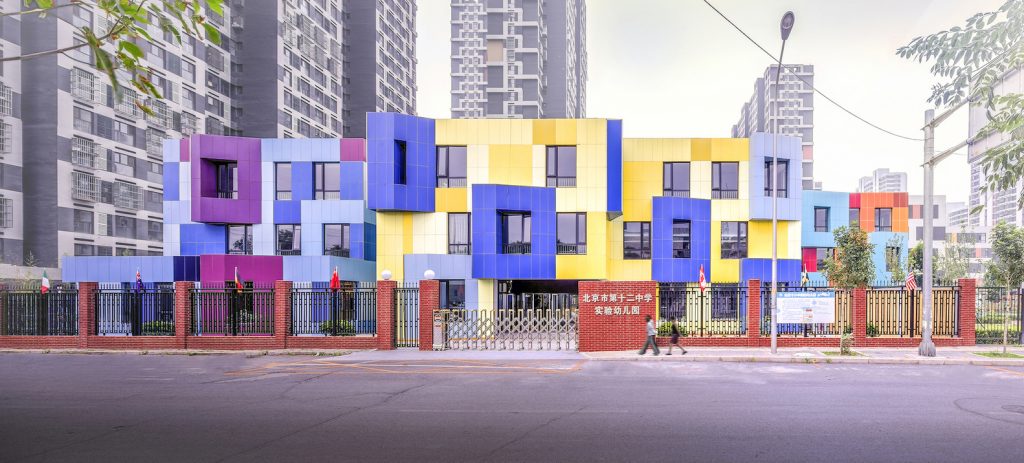
No.12 Middle School by Atelier Alter
The architects used a variety of colors in the elevation as well as the interior and exterior environment to stimulate the senses of children and encourage them to explore in the spaces and shapes. Blue is used for nursery, green for toddler and orange for preschool kids, putting different emphasis on keeping children calm or making them more activated.